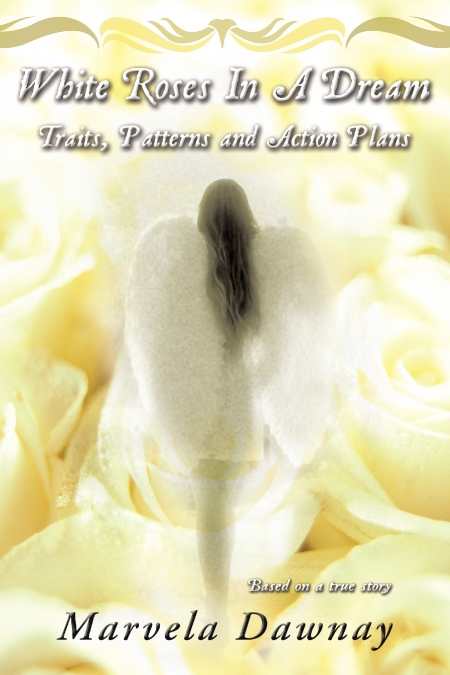White Roses in a Dream
Traits, Patterns and Action Plans
A deep and powerful exploration of recovery from emotional abuse becomes an effective call to action through Marvela Dawnay’s assertive, determined voice.
A sequel to her first book, MANipulated Into Fear, Marvela Dawnay once again explores the terrain of emotional abuse, but this time she takes on the subject with a more meditative perspective. White Roses In A Dream continues her story where the initial book left off, providing a fuller, richer account of what it’s like to move beyond abuse and into a new relationship.
Dawnay begins by revisiting the story of her multiple marriages to Rolf, a former high-school classmate whose behavior alternated between charming and manipulative. While hiding alcoholism and drug addiction, Rolf would use Dawnay’s fears against her, regularly knocking her self-esteem.
With this sequel, Dawnay broadens the focus from getting past her own hurt, shame, and victimization to helping others. She details the patterns that kept her in an abusive relationship, aiming to help others spot similar situations. Because her daughter, LaKina, also became an abuse victim, Dawnay realized how patterns can survive through generations, making it even more important to break the cycle.
The result is a strong call to action: “I am challenging each and every one of you to come out of your box and start talking about what an abuser is doing to you or someone you know … Let’s fight for what we know is right.” Often, Dawnay adopts this effective warrior tone, acting less as cheerleader or therapist and more as drill sergeant, splashing cold water on readers who refuse to wake up. “Take a look at yourself,” she advises, “and think about how you were before you made a big mistake by letting an abusive person into your life, someone who only intends to destroy and use you for self-gain … Please make the right choices with your life.”
Although Dawnay provides more narrative about her life after Rolf—writing the first book, traveling to Germany, tentatively starting a new relationship—she focuses on her inner journey from victim to victor. White roses become a symbol of her new beginning and renewed strength, and she artfully uses the symbolism to convey her ideas about transcending abuse.
Dawnay’s ability to detail and draw meaning for others from her painful experiences is strengthened by her straightforward, conversational writing style. Like a long letter from a friend, White Roses In A Dream strikes a personal, thoughtful tone. For those who suspect they may be dealing with abusive patterns in their own relationships, or seeing them among friends or family, Dawnay offers simple and powerful advice.
Reviewed by
Elizabeth Millard
Disclosure: This article is not an endorsement, but a review. The publisher of this book provided free copies of the book and paid a small fee to have their book reviewed by a professional reviewer. Foreword Reviews and Clarion Reviews make no guarantee that the publisher will receive a positive review. Foreword Magazine, Inc. is disclosing this in accordance with the Federal Trade Commission’s 16 CFR, Part 255.

